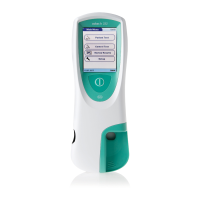197
The current RF system consists of an antenna and a WLAN system-on-chip (SoC) along with
other components. The WLAN system-on-chip is the core of the WLAN system. The RF system
used in the cobas h 232 meter specifically adheres to the following specifications:
■ Its WLAN system-on-chip supports IEEE 802.11b and 802.11g. It works seamlessly
together with other Wi-Fi certified transceivers. It also implements the Wi-Fi Protected
Access (WPA™ - Enterprise and WPA™ - Personal), Wi-Fi Protected Access 2
(WPA2™ - Enterprise and WPA2™ - Personal), and Wired Equivalent Privacy (WEP) secu-
rity mechanisms with Temporal Key Integrity Protocol (TKIP) and Advanced Encryption
Standard (AES).
In addition, the system supports the extensible authentication protocol (EAP) with
EAP-TLS, EAP-TTLS/MSCHAPv2 and PEAPv0/EAP-MSCHAPv2. The cobas h 232 meter
interoperability Wi-Fi certificate can be accessed at
http://certifications.wi-fi.org/search_products.php.
Further information including a glossary of terms, frequently asked questions, and other
topics related to Wi-Fi technology can be found on the Wi-Fi Alliance site
(http://www.wi-fi.org/).
■ The used channels in the 2.4 GHz-band are channels 1-11. (Channels 12-14 are not used
by the cobas h 232 meter.)
■ RF output power is approximately 15 dBm at a data rate of 54 MBPS.

